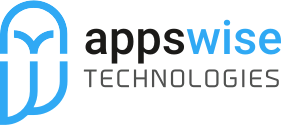DevOps is a methodology which solves the operational and logistics challenges of technology Delivery.
What is DevOps –
Imagine these scenarios –
- Scaling up your Technology infrastructure and Landscape for another geographical region
- Scaling up your Online Marketplace for Thanksgiving or Black Friday sale
- Recovering from a massive data center failure
- How to improve Go To Market Time, to improve customer satisfaction ?
- How to improve delivery time to the customers?
- How to get faster ROI ?
To address above points what is your game plan? How much is automation involved here? How much manual effort and time does it cost? Is there a way that these all can be optimised? Answer is DevOps. If you have it in place you are already ahead of most competitors. To get the details on how these questions get answered by DevOps keep reading ..

Why is DevOps important ?
Advancement today has set for a world which is full of new technology that change at fast pace like Big Data, Internet of Things, Artificial Intelligence, Machine Learning and so on. Inspired by these just-in-time development and business process improvement, DevOps has become a global trend in the tech industry.
Advantage of DevOps –
DevOps is a culture, where as the term suggests Development (Dev) and Operations (Ops) teams align much closer together and share in-between knowledge in improved ways. But DevOps is much more than this – it is a ‘state of mind’, a common approach to a problem. Businesses today has a point in implementing DevOps only if it’s directly contributing to the company’s increased productivity, effectiveness and, profitability. The only way that it is possible for small and medium enterprises is when the Development and Operations team work in sync and streamlining the provision of tech solutions that solve the business needs. Moreover Unbounded collaboration is achieved with notably higher rates of employee loyalty and engagement.
How to improve delivery time to the customers?
Analysis- DevOps methodologies when implemented in business models enable to break the complex and big projects into smaller modules of functionality that can be delivered on a steady rate. Hence the clarity and speed up of the release schedules and delivery timeline are reduced, allowing to create a buffer for any future changes on the same project.
Recovering from a massive data center failure
Analysis- Research also show that DevOps companies have an almost supernatural advantage of 30x the deploy frequency of their non-DevOps peers. Meantime to recovery process of DevOps also reduces 168x reduction to recover customer failures.
How to get faster ROI ?
 Analysis- DevOps allows a business to release twice as fast, they can effectively double their annual revenue.Getting Paid for Faster returns in DevOps Is basically, reverse-chronological order of importance for an ongoing business:
Analysis- DevOps allows a business to release twice as fast, they can effectively double their annual revenue.Getting Paid for Faster returns in DevOps Is basically, reverse-chronological order of importance for an ongoing business:
- Get money after you bill.
- Bill after you deliver benefit.
- Deliver benefit after you ship.
- Ship after you’ve made the product.
- Get money to make product.
Over a mid to long term duration there is 20% increase in annual revenue would be on par with enterprise averages, thus definitely a better ROI.
How to improve Go To Market Time and improve customer satisfaction ?
Analysis- Failure in DevOps is a mandate notion which is taken as a must to happen in real world. DevOps provides embracing the notion that you will fail and that you should even practice failing, this is a key mental step to focusing on meantime to recovery (MTTR). Moreover the process of Continuous deployment = continuous feedback allows a chance to test users’ satisfaction in real time, adjust their products to customers’ needs, thus shaping a tighter market-product fit. Hence reducing failure factors in business models.
Realisation of the Hour!

Currently Agile teams used automated build, test automation, Continuous Integration and Continuous Delivery.
With DevOps that is extended further to “Infrastructure as Code”, configuration management, metrics and monitoring schemes, a toolchain approach to tooling, virtualisation and cloud computing to accelerate change in the modern infrastructure world. DevOps brings some tools on the block as well like configuration management (puppet, chef, ansible, cfengine), orchestration (zookeeper, noah, mesos), monitoring, virtualisation and containerisation (AWS, OpenStack, vagrant, docker) and many more. This makes the SME’s prosper with clients much better.
It makes ONE team with an objective to delivery software fully to the customer. So DevOps becomes the need of the hour for an organisation aiming to stay ahead of the competition. Get in touch with us if you would like to implement DevOps within your organisation or simply need any consultation or advice on it.


